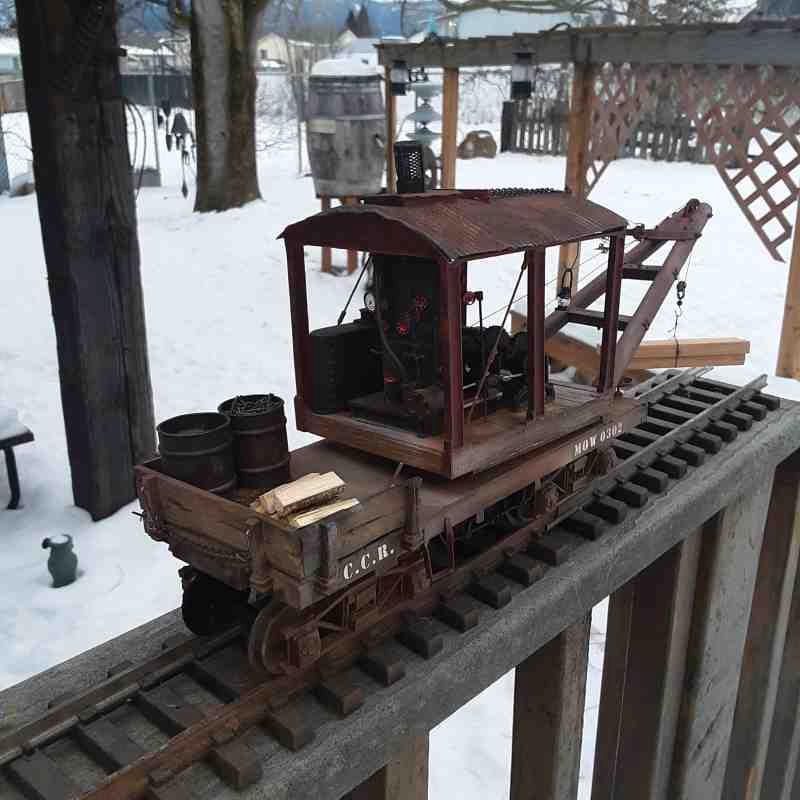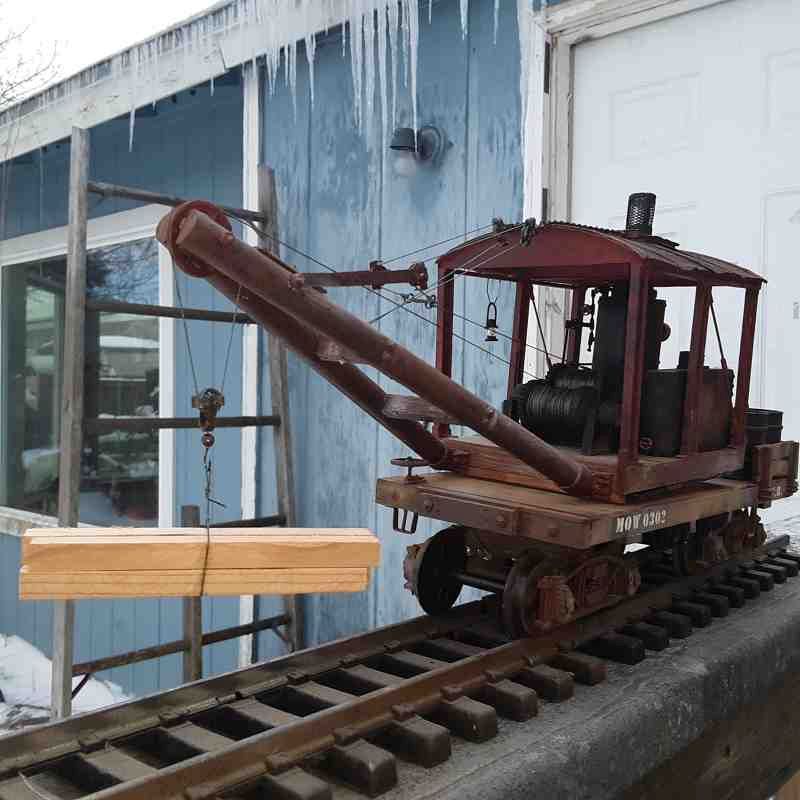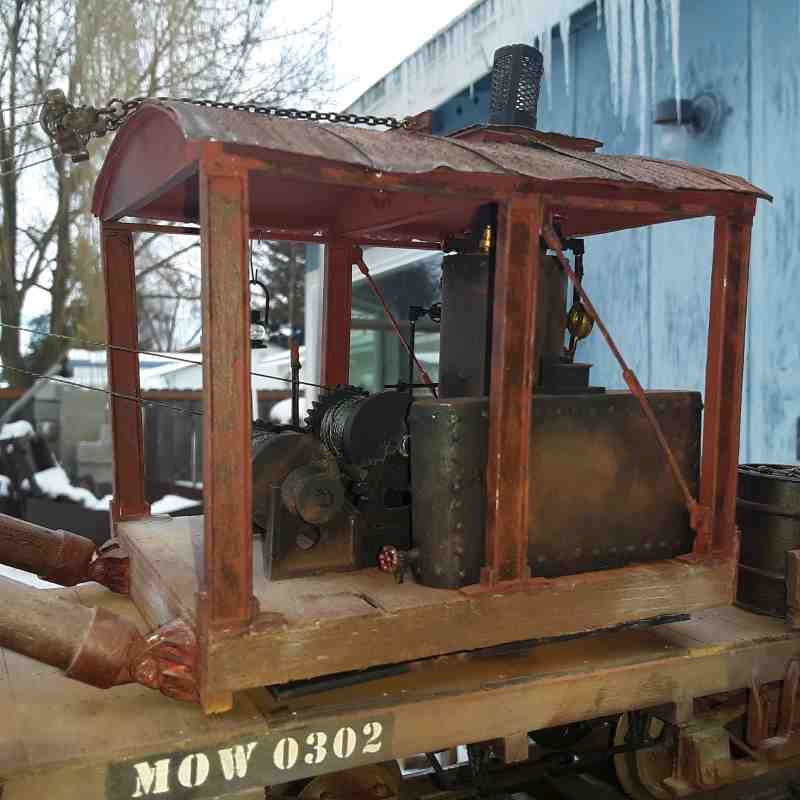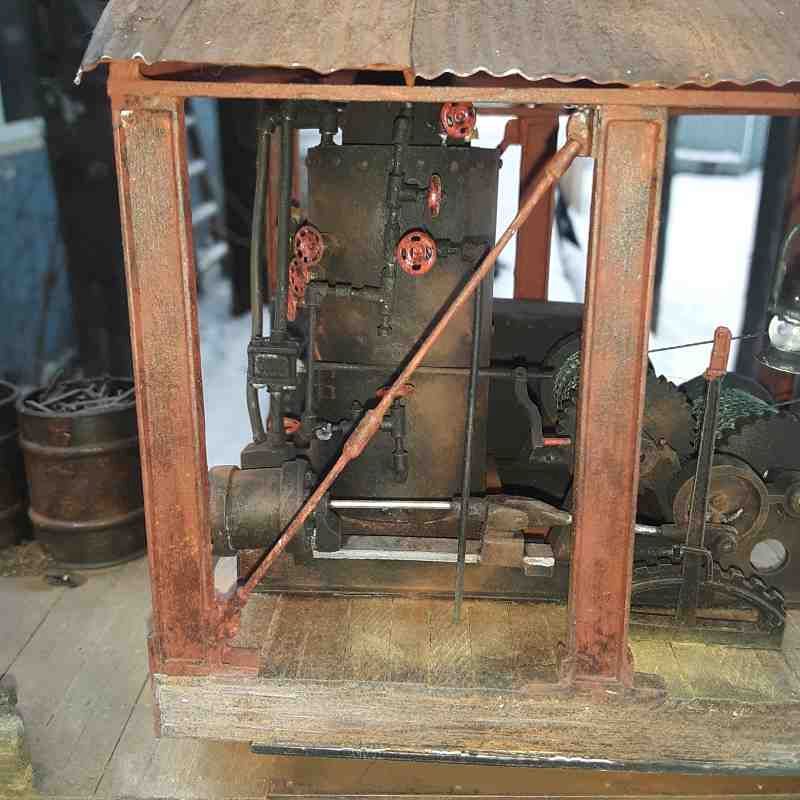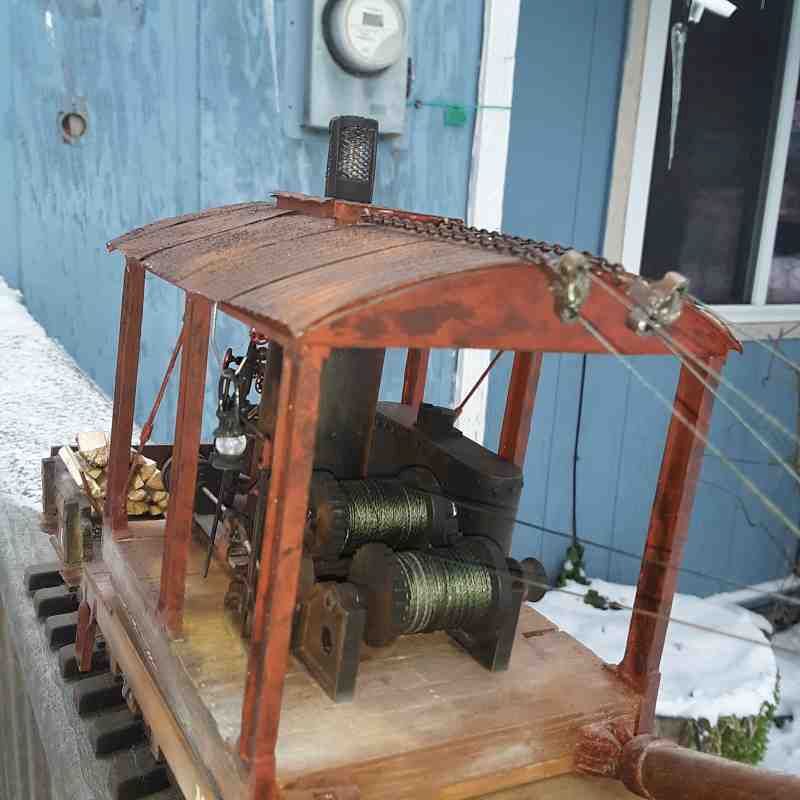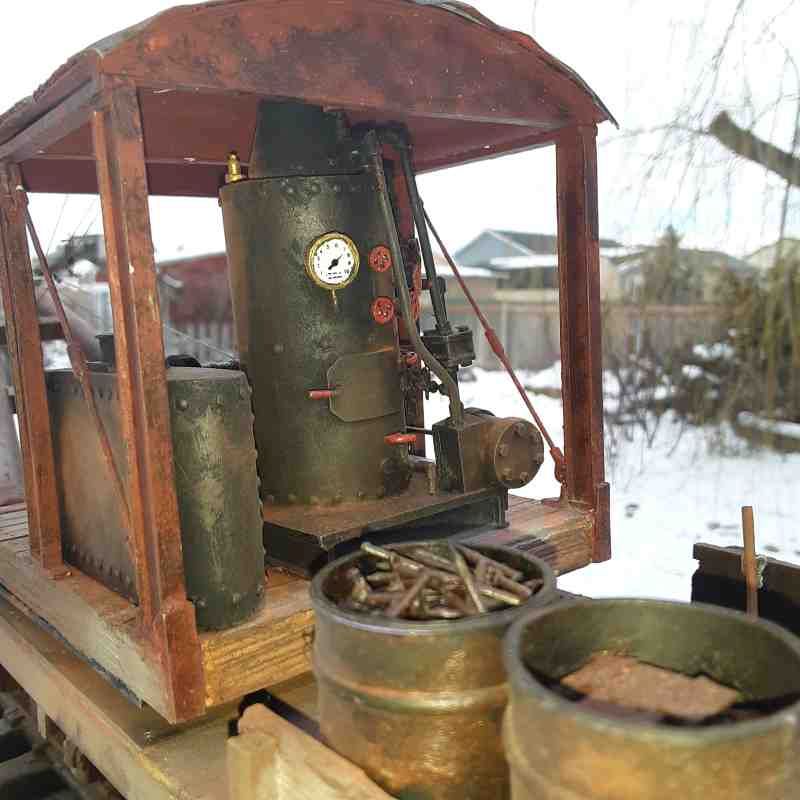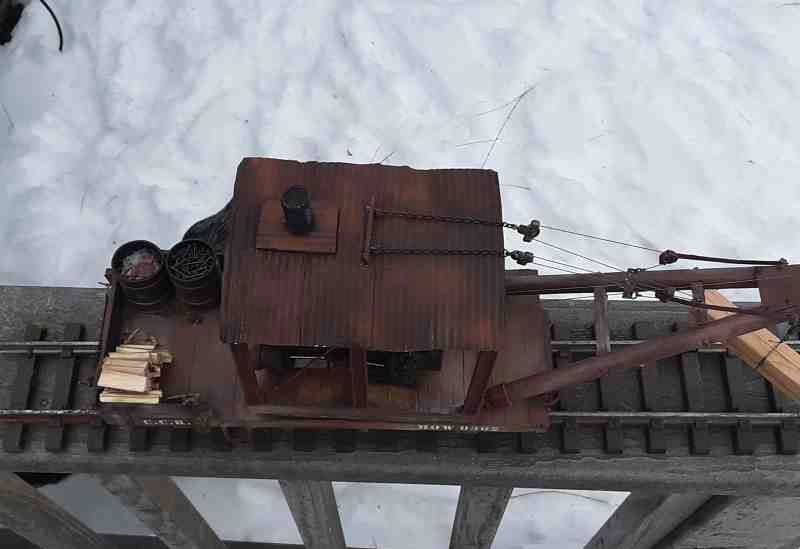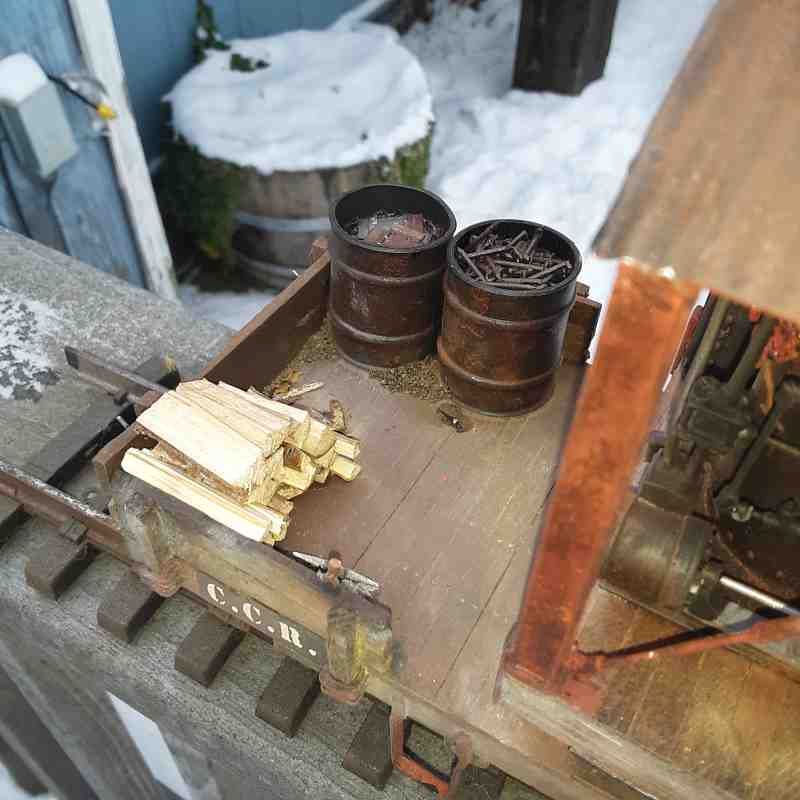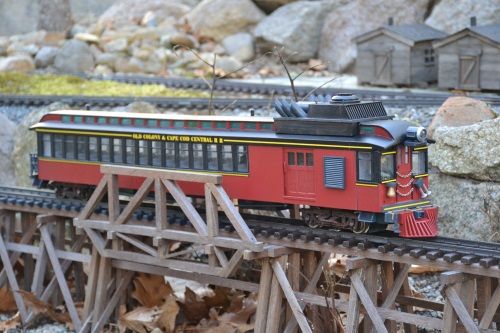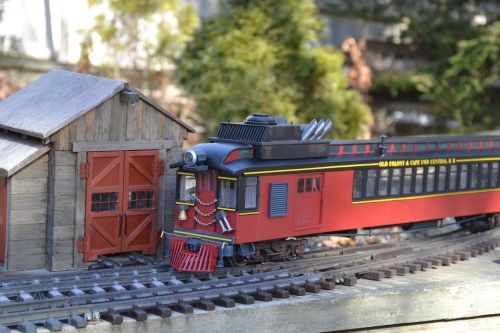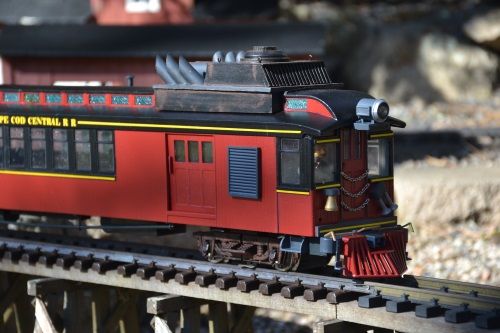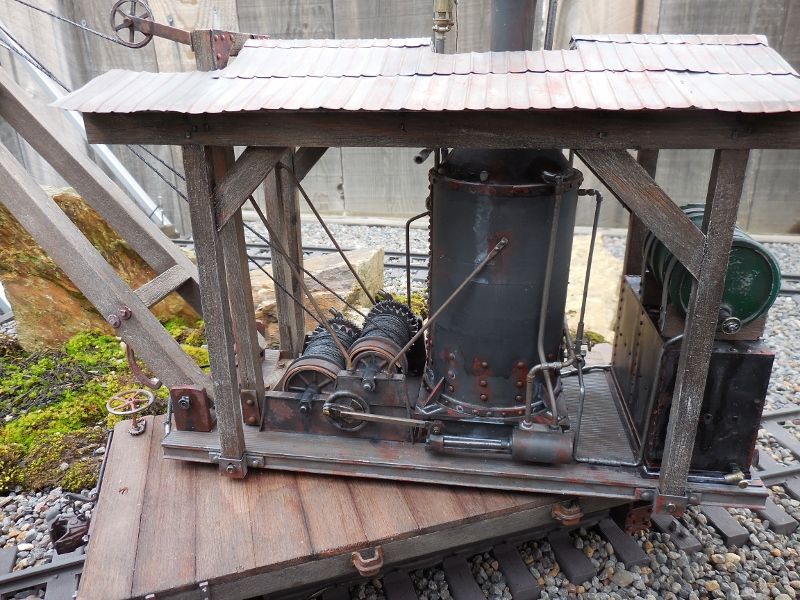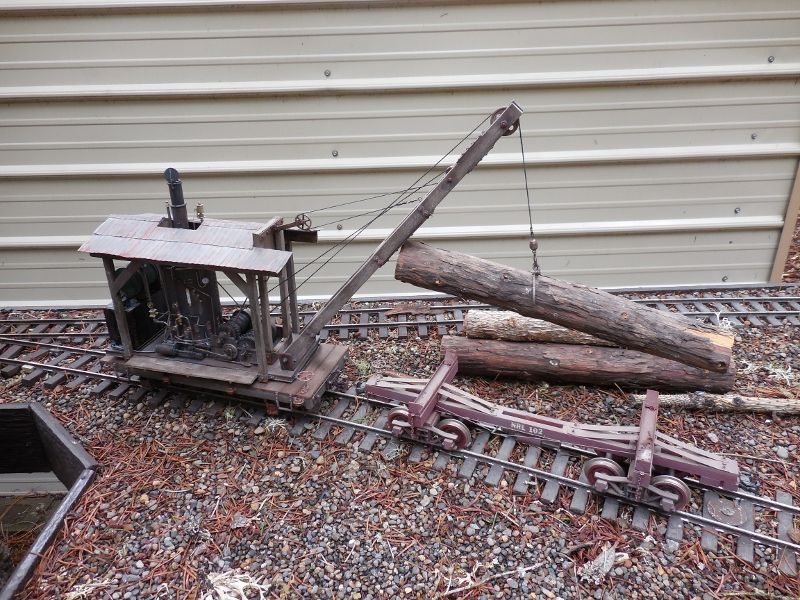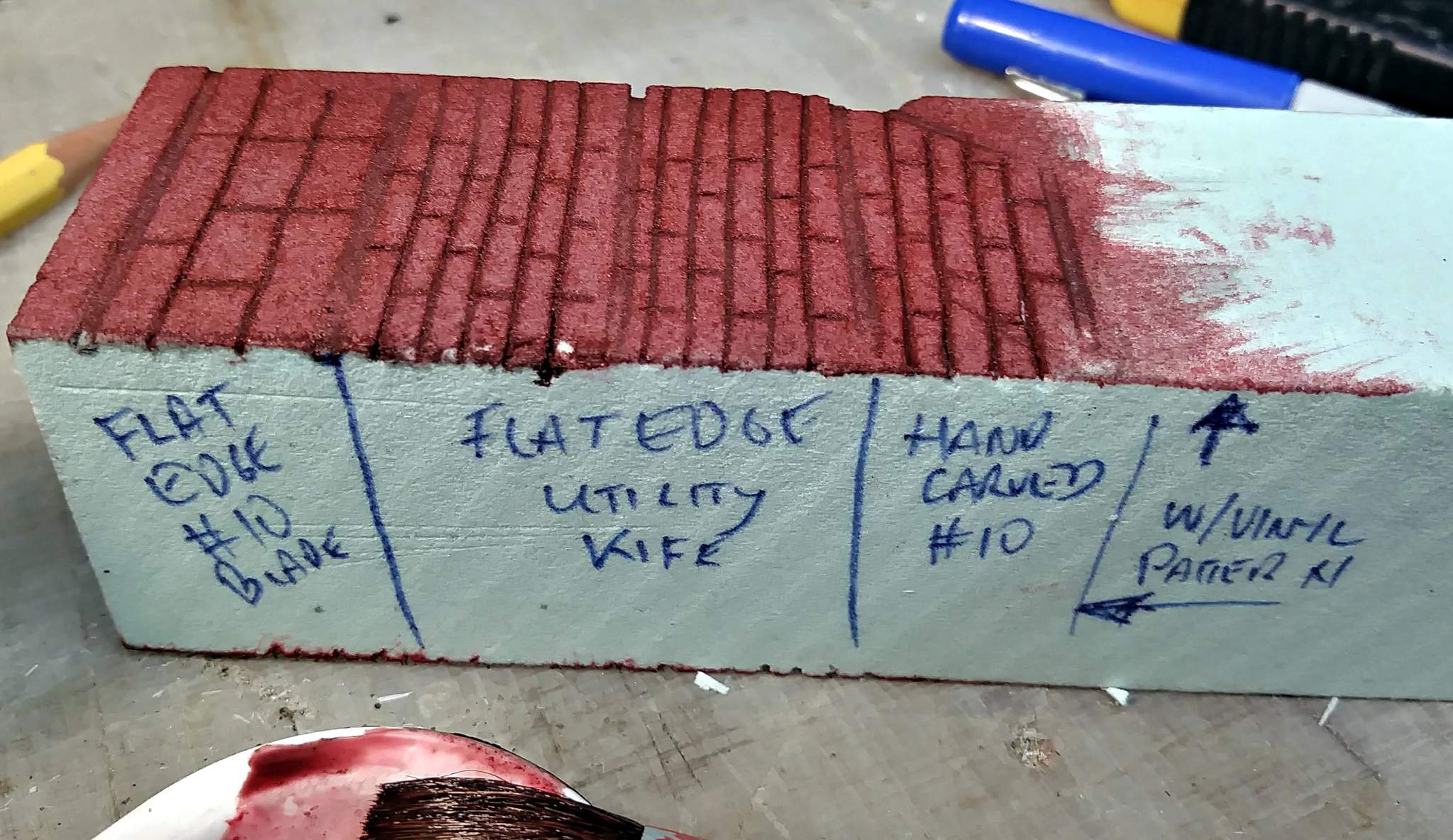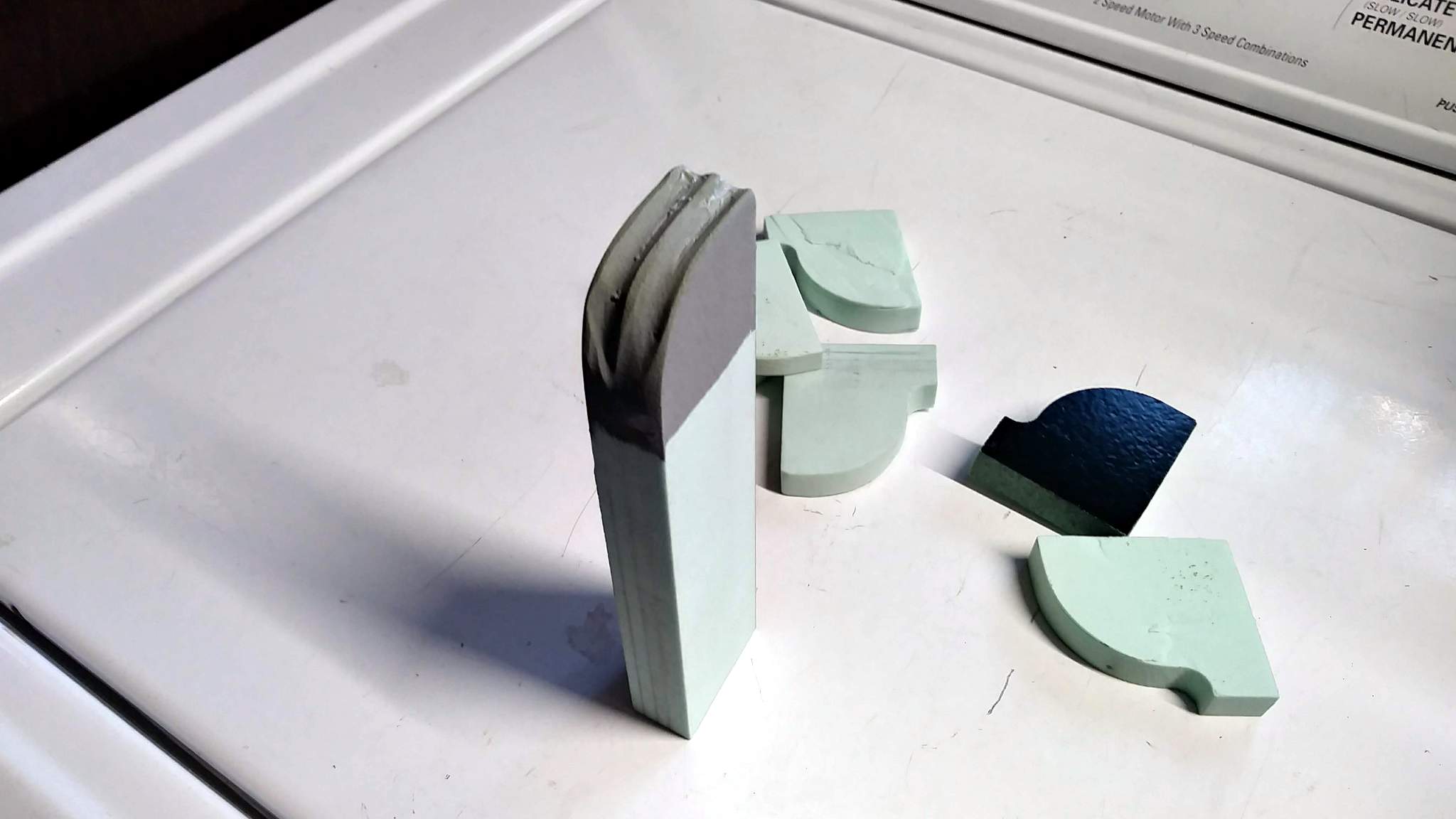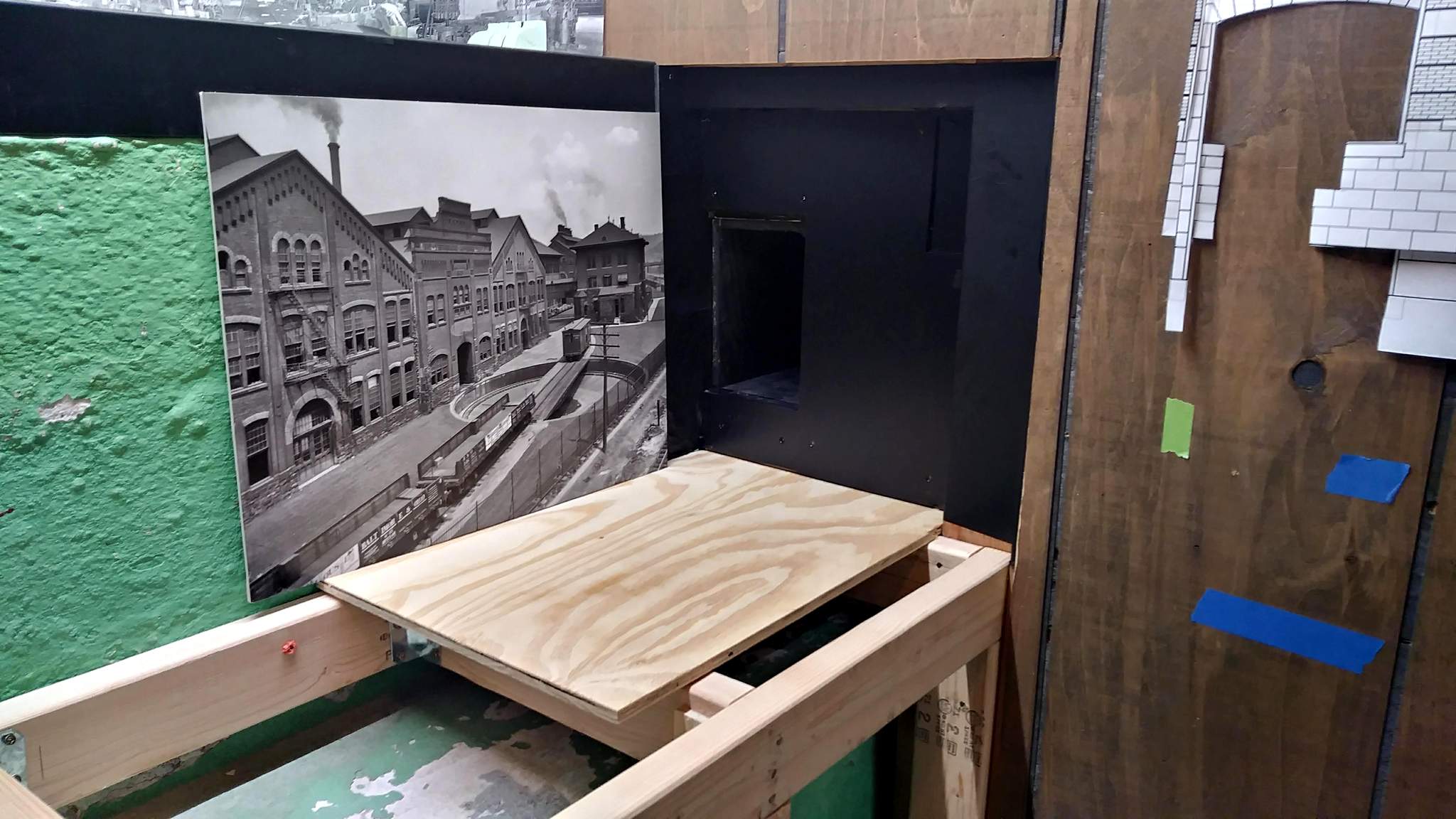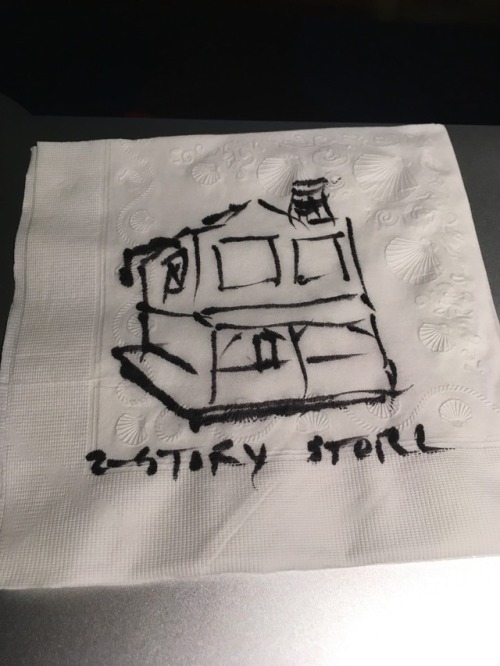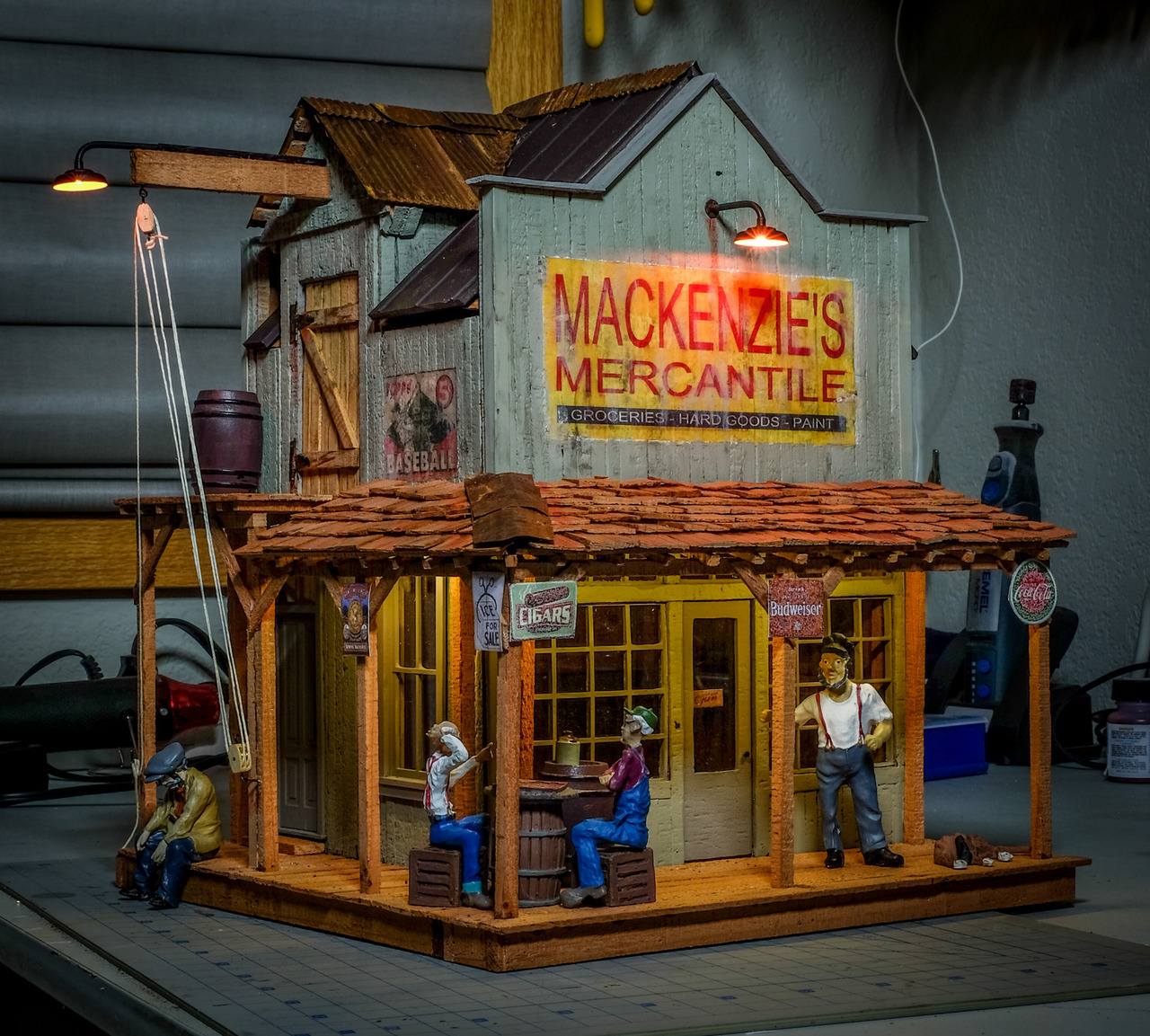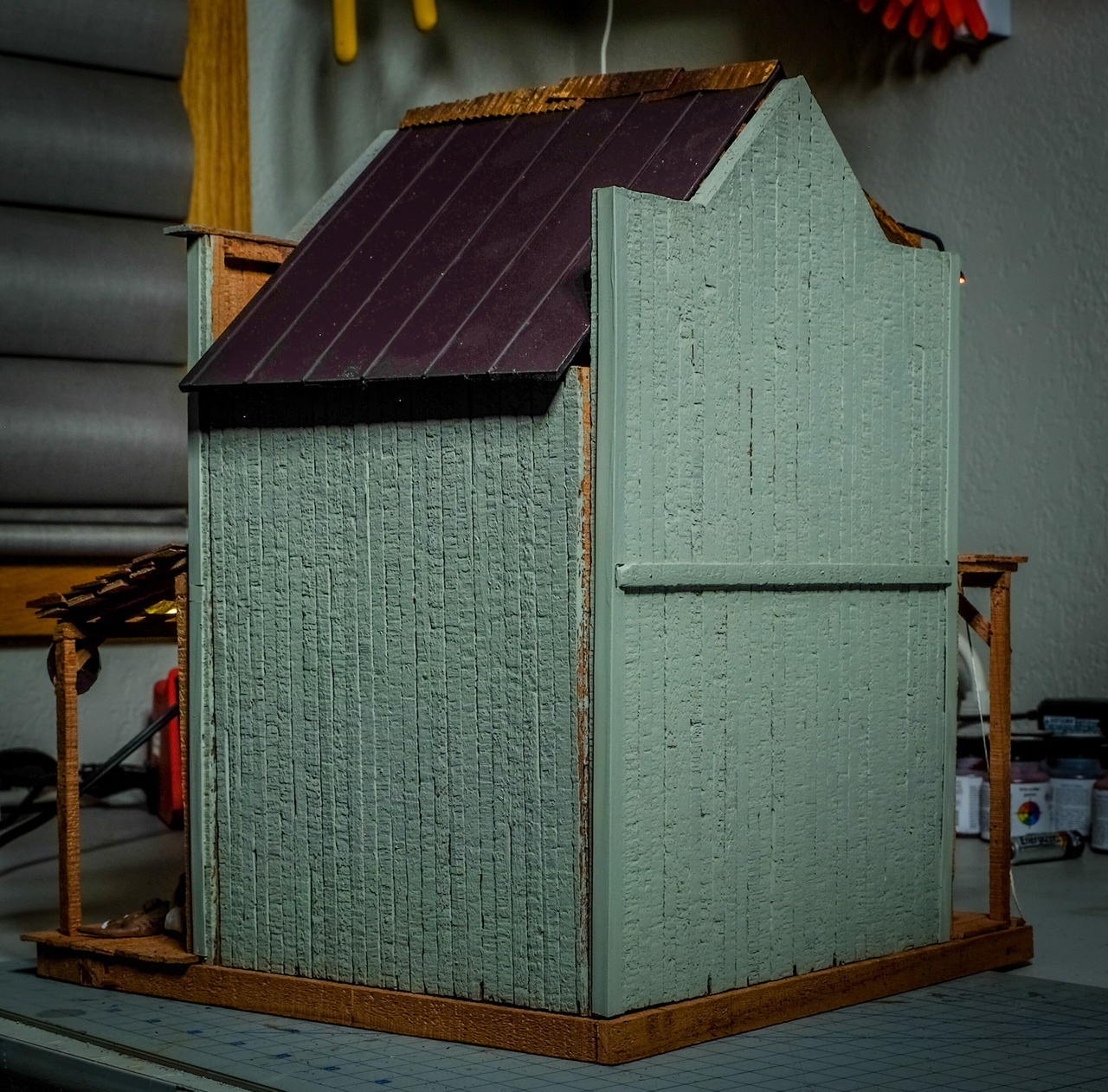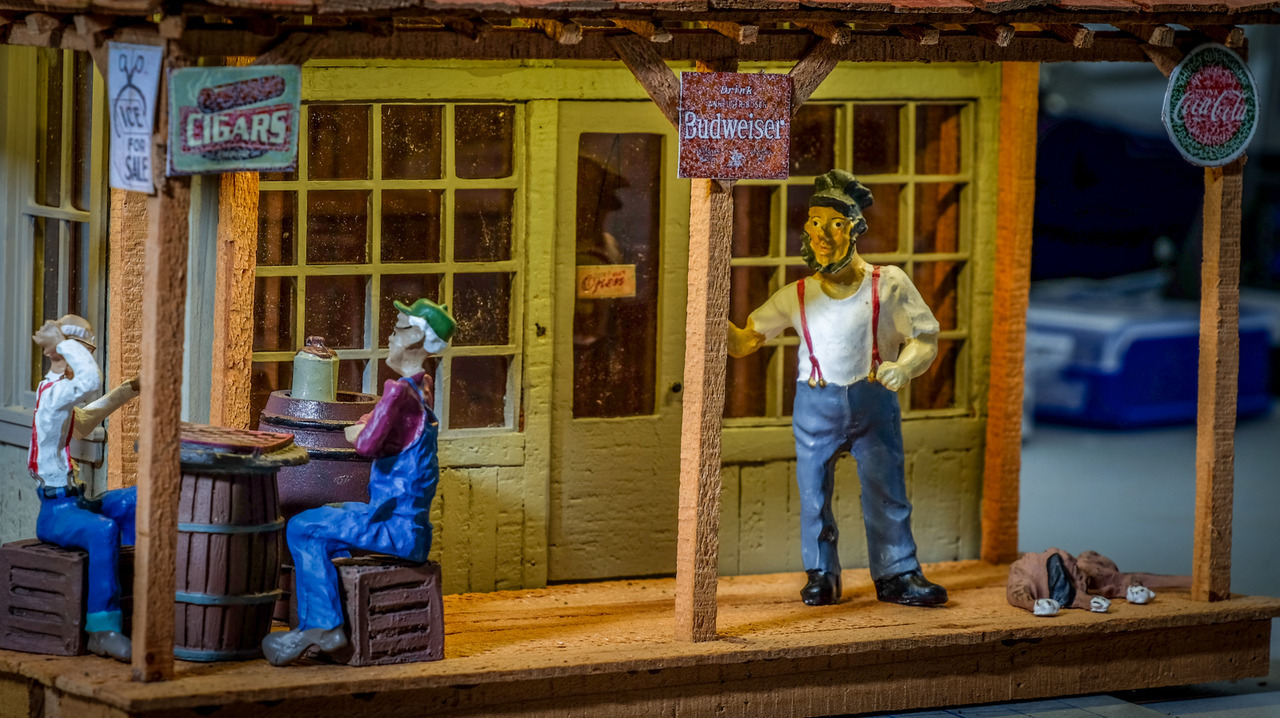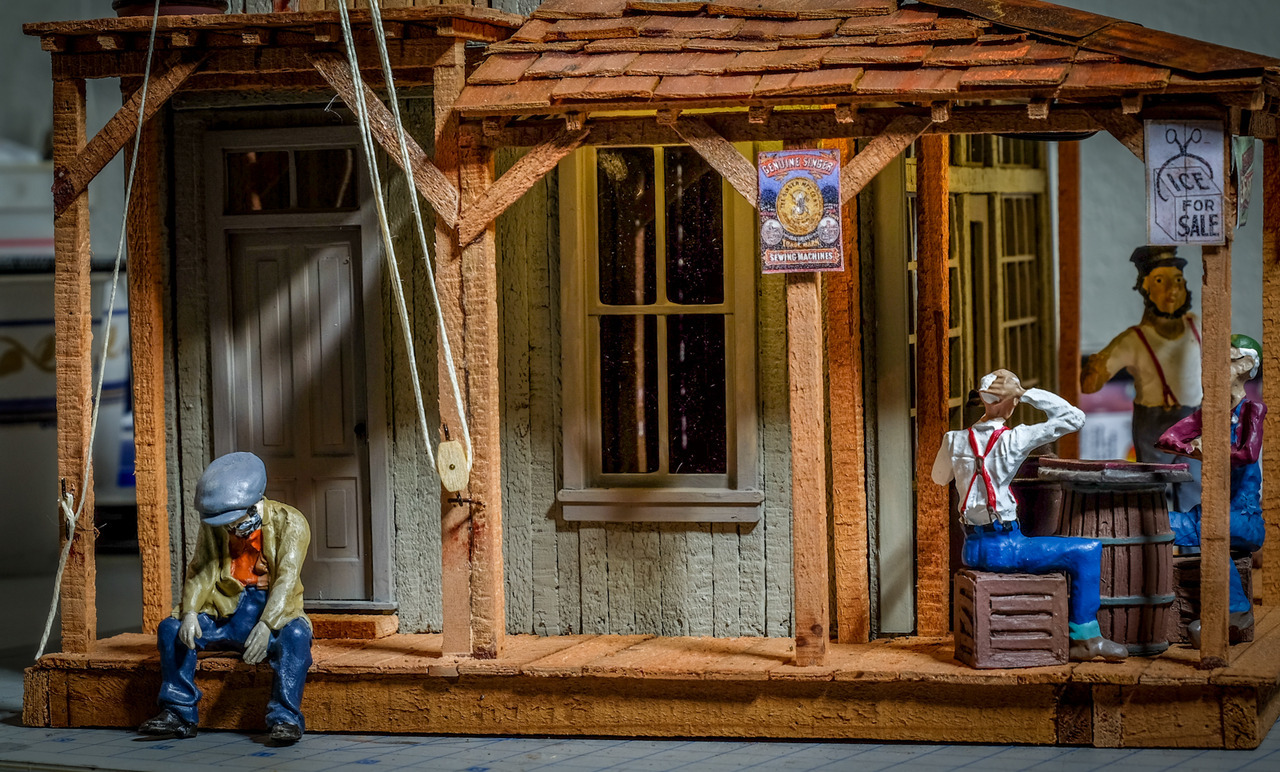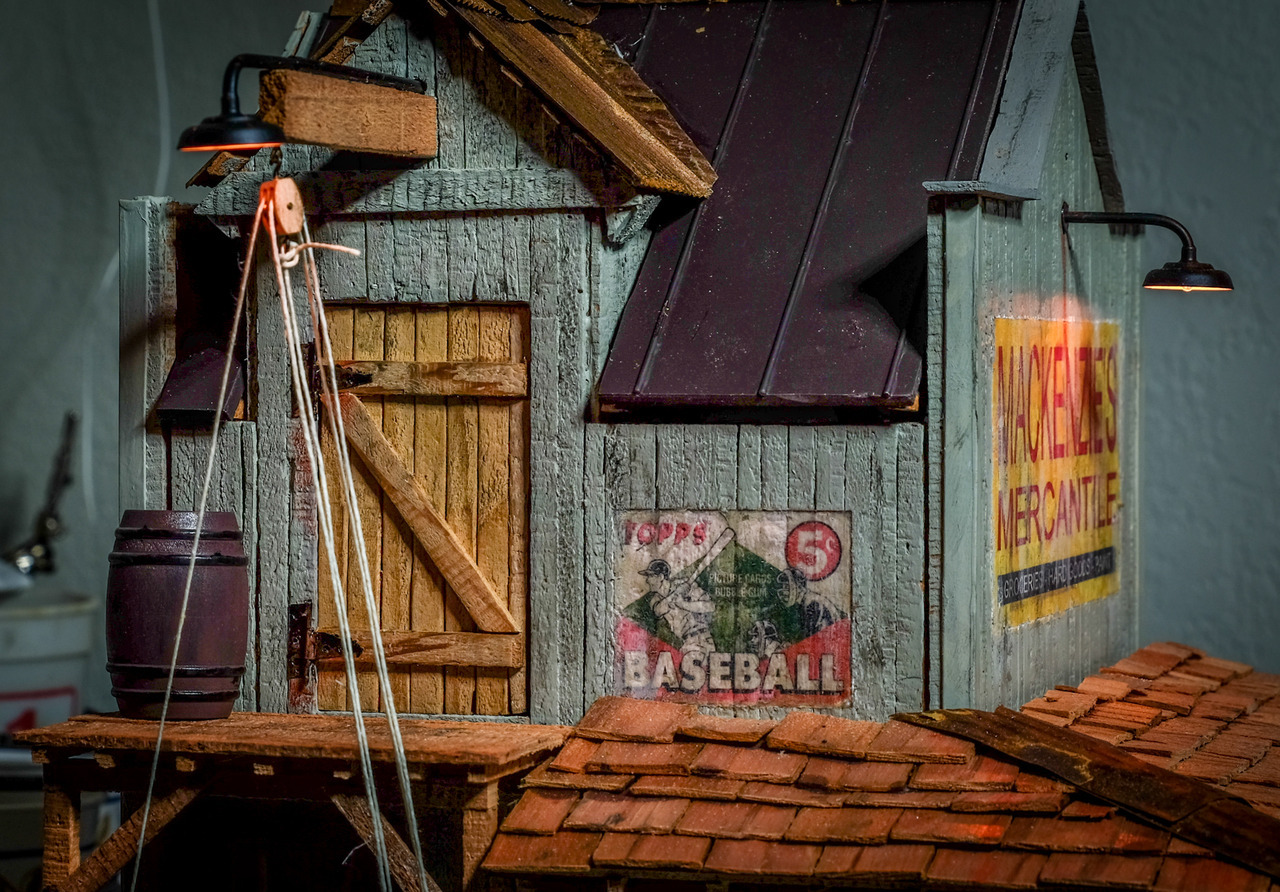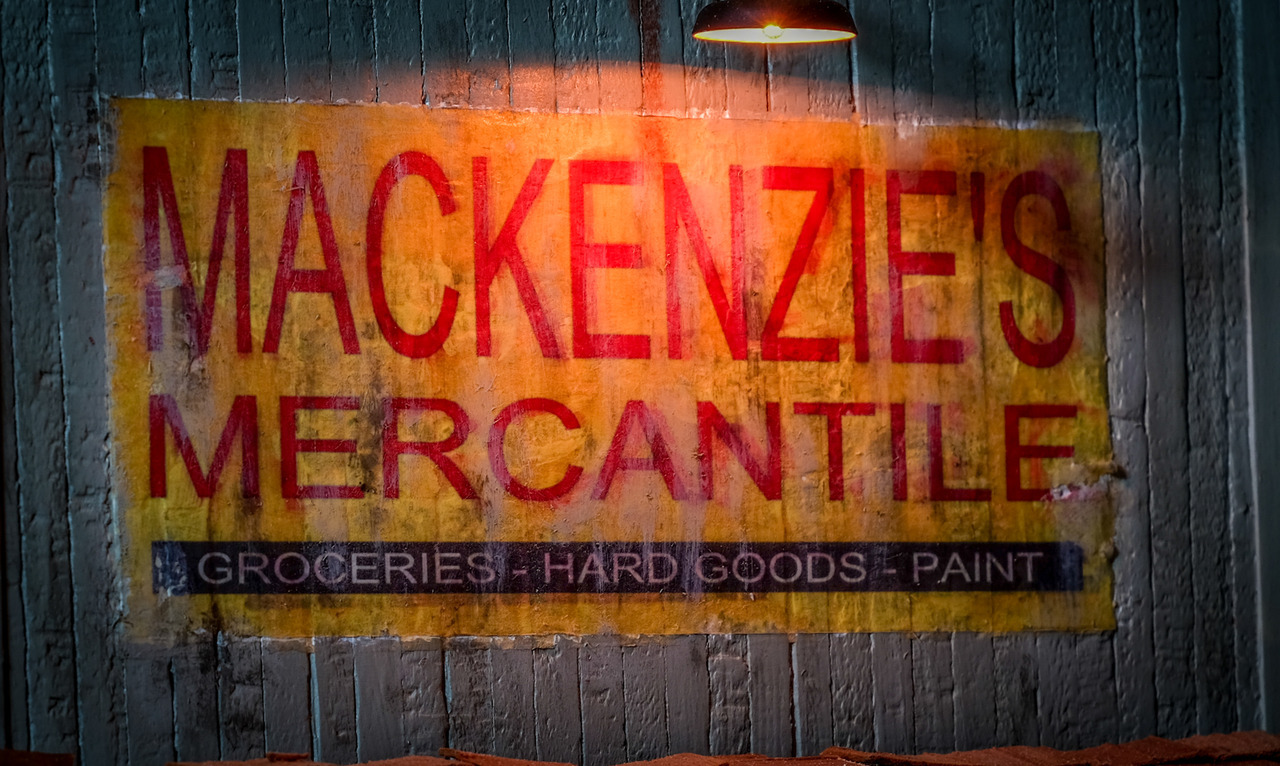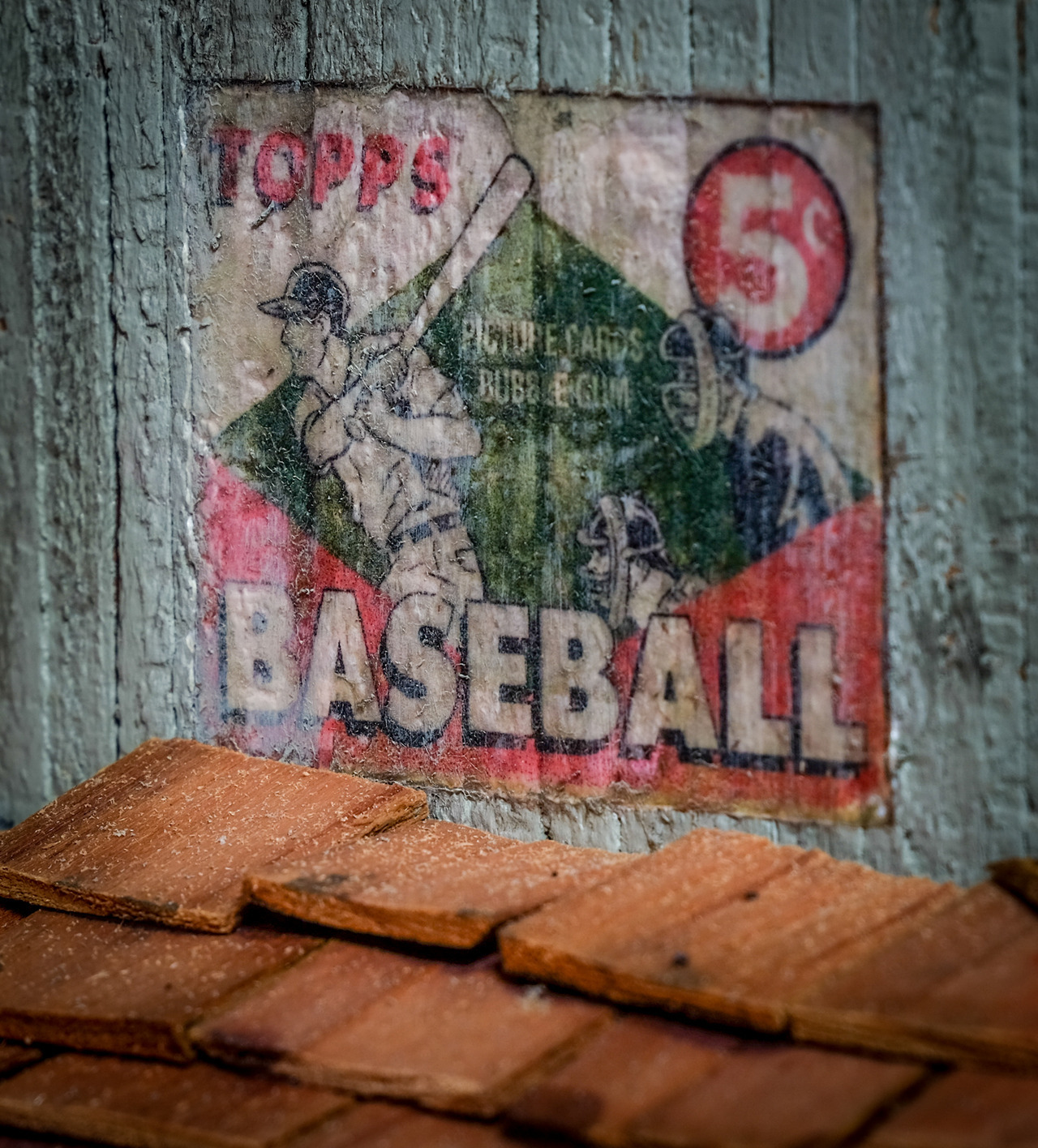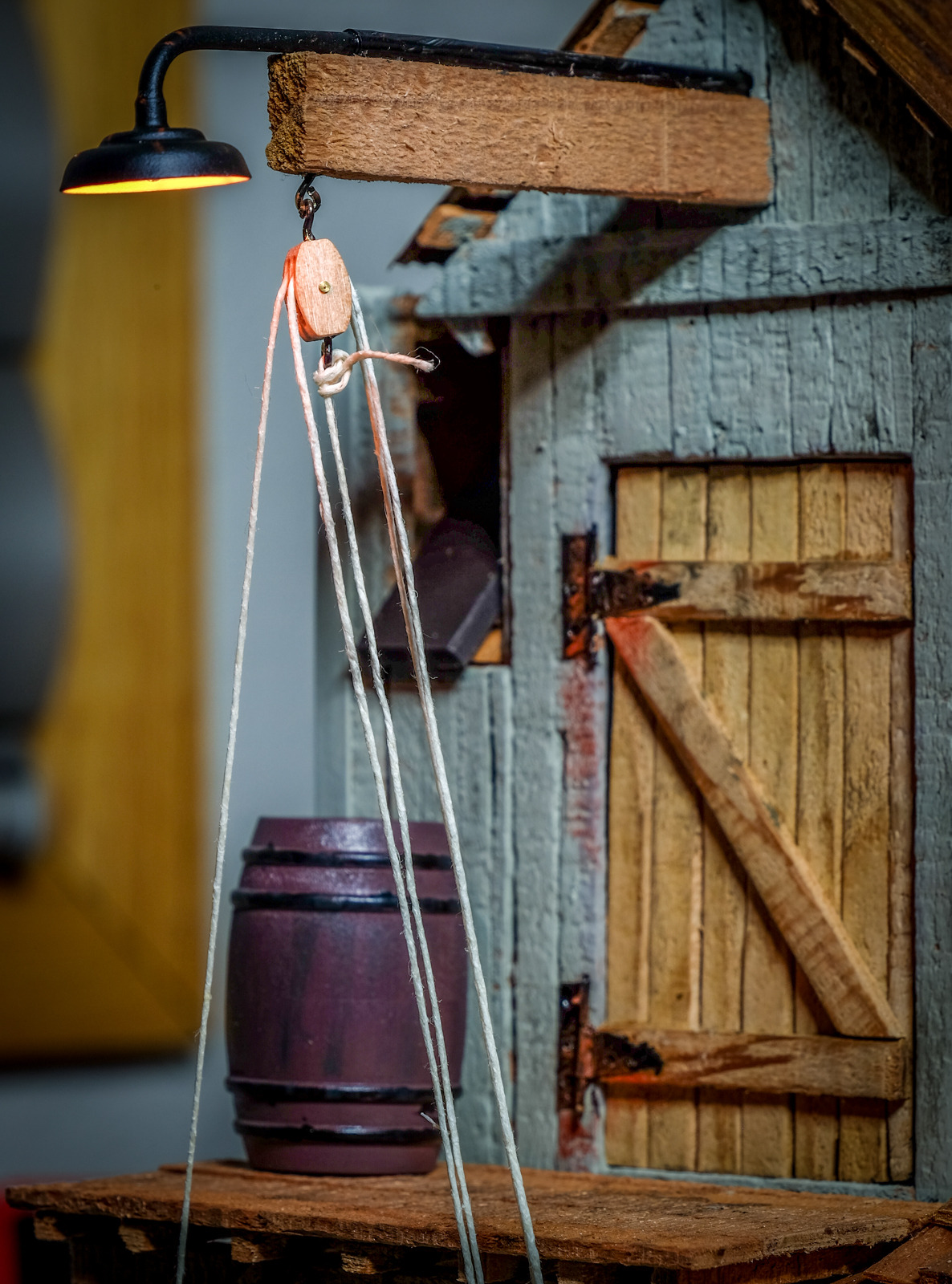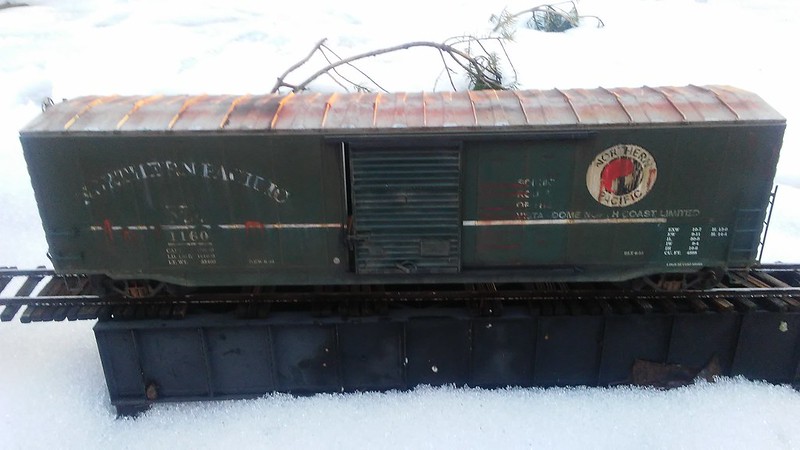OK here it is , as Tim said , compared to the other builds presented mine was a total flop, and I contemplated not showing the finished product for many reasons, including I never really had time to do anything to a higher standard than the proverbial 15 to 20 ft rule, I do not have any junk drawers/ scrap piles/ leftover parts to add to the finished building to detail it. Also work seemed to do its best to keep me from devoting any time to getting it done to a satisfactory level. Ok is that enough excuses or do I need to add i made a halfway attempt of cutting my index finger off an the last weekend to further delay things.
Anyway with a lot of embarrasment to show this next to all these fine examples of model building I present Eli Industries Warehouse facade.

Hope to score some points for Mik like washer/dryer presentation, its raining all day here is Peoria, AZ, I built this using coroplast signs, the plan was for an awning over the railcar, but time ran out so that will be added later, along with many details. The rail door is a corrogated piece of beer can, framed in Ipe hardwood scraps, same for the truck dock roll up door on the side. I took a piece of 2x2 pine and cut the steps, but have not made railings for them yet.

the truck dock plate is a flattened out piece of corrogated aluminum pulled straight to give it some texture and folded to represent a dock waiting for the truck to back in, also some rubber plugs were cut to make the dock bumpers

one of the scrap pieces I did have to use was from my bridge build using a deck from a milk crate, the side pieces were trimmed to use as windows, cut to fit into the openings and then using some hardware cloth ( who ever gave this stuff its name is a sadistic person, this is the sharpest, stabbyiest cloth I have ever been around!) to represent the panes,and some plastic to make “glass”.

View of the dock looking through the box car. I am going to add some lights and other things to make this more appealing , at least to me.

the sign was a last minute addition taped on for pictures, I used a scrap of coroplast, and paint pens to do a quick temporary sign, the huge expanse that will have the awning on it over the car was so big and blank, it needed something. Pending final approval from grandson Eli as to if this fits his idea of what his building is then proper artwork will be commissioned and added at a later date, along with a better paint color.
This Mik challenge was that , a real challenge for me this year, i lost a lot of time to work, and so things were rushed, mistakes were made, but as always I enjoyed the process and congrats to all the great builds . Thanks for looking, Pete.
Total expenditures are about $23.00 for glue and spray paint to paint it. Also a whopping 1.66 for some hardware cloth included in the total.
